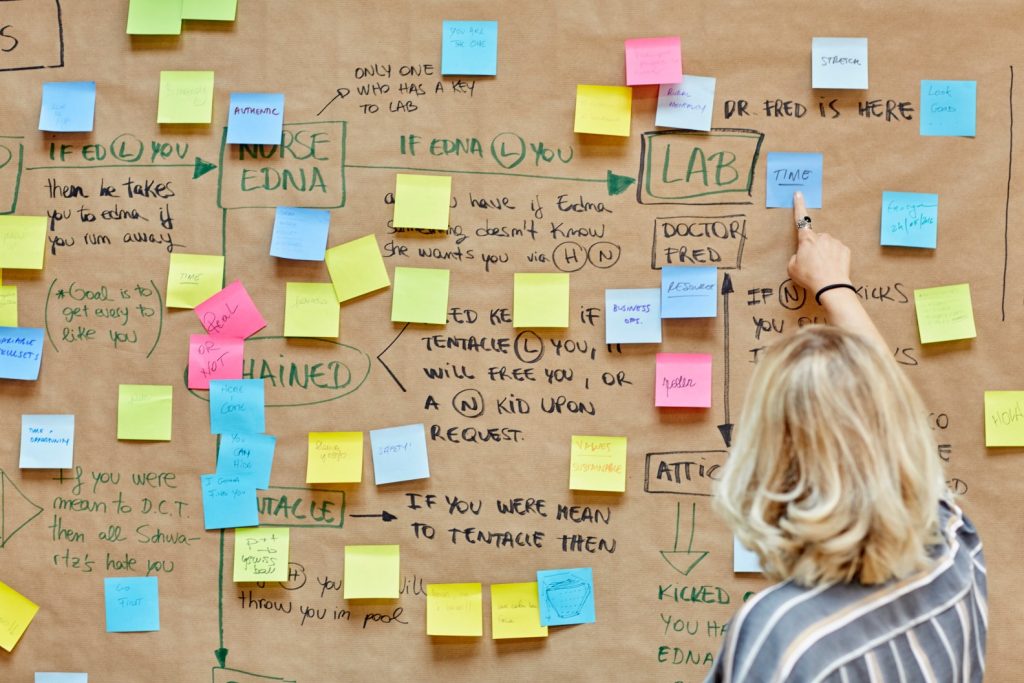Digital Reinvention
Designed for Humans: Why Enterprises Are Embracing Enterprise Design Thinking
December 10, 2019 | Written by: Eric Ma and Patrick Cheung
Categorized: Co-innovation | Digital Reinvention | Digital Transformation | Services
Share this post:
How do you give your offering the love of millions?
For ages, enterprises have been searching for the right answer. Those who did are now respectable brands. Those who did not are exceptional business cases of what went wrong.
But getting a consumer hit is no longer enough. To be successful, today’s enterprises need to make it sustainable, repeatable, and scalable. It is a tall call in today’s complex, connected, and competitive landscape, where customers are spoilt for choice.
Clearly, the dark arts practice of mixing gut-feel, calculated risks, the right timing, artisan touch, and a large dash of good luck is no longer enough. Enterprises need to get scientific.
Enter Enterprise Design Thinking (EDT).

IBM Enterprise Design Thinking
User Design by Users
Many brands often feel like they are playing Russian roulette when launching new offerings or driving buying behavior.
But Asia Miles did not want to play it. Instead, the loyalty points company wanted its website to be exactly what its members wanted: intuitive, redemption-ready and inviting.
The loyalty space is also immensely crowded. Members are already fed up with the constant offers, deals, and schemes that scream for their eyeball attention when they visit loyalty sites.
Asia Miles dared to be different. They applied IBM iX’s EDT to focus on what their customers wanted. This strong focus on user outcomes is one of the three differentiators that set EDT apart from other design thinking approaches. And for Asia Miles, it worked wonders.
After an extensive round of qualitative user interviews, the company redesigned its entire website’s value proposition. No more marketing messages, intrusive third-party offers, and bombardments of promotions. Instead, users can now quickly review their loyalty points and see what they can redeem it for with minimum fuss.
The user research-based approach increased return visitors, improved customer loyalty, and offered better insights into redemption behaviors. More importantly, it got their loyal customers to earn and burn their points, making Asia Miles a lifestyle destination.
Innovation Never Rests
Constant innovation is a crucial trait for successful enterprises. “Do not fix what ain’t broken” may have been the business mantra in yesteryears, but in today’s world where end customers want their brands to excite them, it is no longer valid.
EDT treats everything, including the end solution, as a prototype. It drives companies to continually reinvent and create new offerings and experiences to get their end customers wanting for more. At IBM iX, we call this restless reinvention.
Restless reinvention, the second differentiator of EDT, is not just about having separate innovation teams. Instead, it sees all stakeholders, from the business owner to the engineer and designer, working together as teams.
Just ask Hutchison Three.com and MO.
Hutchison brought all its relevant business units and stakeholders together to co-create new business and technology solutions using EDT. It got everyone to focus and align on customer needs first and redesigned the Three.com website with human-centric functionalities that delivered real business impacts.
Next, the telecommunications company saw an opportunity to create a unique experience for the younger generation. Using EDT, it created a mobile-only experience under its MO brand for the younger customers that sported native digital experiences.
The approaches worked. Hutchison transformed its entire business to be less process-oriented and transactional and become more innovative. It said goodbye to static content and engaged its end customers with interactive experiences across different touchpoints.
With MO, it built rapport with a younger generation that spoke their own lingo, had their own wants, and behaved differently. And winning two MOB-EX awards for both projects is testament that the company was on the right track.
Innovation for everyone by everyone
At the heart of the EDT lies the idea that it takes everyone to transform an idea into a runaway success.
At Asia Miles and Hutchison, IBM iX brought together the various stakeholders to work together. It broke down silos, allowed ideation across the enterprise, and put the end customer at the center of all product or service designs.
This is the third differentiator of EDT – enabling these stakeholders to innovate together. Besides having co-ownership and encouraging co-creation, diverse ideas also create a more comprehensive customer journey mapping.
The Human Framework
EDT offers a framework to take ideas and transform into consumer hits that can scale and be sustainable.
It takes a step beyond creating one-hit wonders and applies a logical process to understanding what the market needs. It formalizes the intent behind the products and services being proposed, creates breakthrough offerings that speak to the end customers, and drives positive outcomes at speed and scale.
In the end, EDT brings companies closer to their end customers by putting the human back into design. All it takes is an open mind.

Enterprise Design Thinking Workshops

Digital Strategy & iX Leader, Global Business Services, IBM Hong Kong

Strategy & Experience Design Lead, Global Business Services, IBM Hong Kong
科技工具非萬能 智能工作流如何為嶄新商業模式領航?
(文章於2021年8月28日在香港經濟日報網站刊登) 新冠肺炎疫情衝擊全球經濟,逼使各行各業加快數碼轉型(Digital Transformation)及嶄新商業模式,各種創新科技也因此加速普及。個別科技工具或許能助企業暫時減輕負擔或紓解燃眉之急,但它們並不是萬靈丹。 舉個例,企業可以運用人工智能分析產品銷售的狀況並藉此作出改善建議;但要真正收效,企業就必須根據這些分析和建議,持續地改革產品研發、製造以至物流等環節。要真正發揮創新科技的效力,智能工作流(Intelligent Workflow)的革新才是關鍵。
混合雲應用增 機密運算、量子安全加密、完全同態加密增企業信心
(文章於2021年3月31日在香港經濟日報網站刊登) 有云「牛轉乾坤」,儘管今年的前景對企業而言或未明朗,但我們還是能作出一些技術相關的預測。 首先,即使是敏感和嚴格監管的行業也將繼續向混合雲轉移,但企業在過程中,需要採用多方面措施,應對安全威脅的不斷演變。而機密運算(Confidential Computing)、量子安全加密、完全同態加密(FHE,Fully Homomorphic Encryption)等安全技術將有助鞏固企業的信心。
How HKTDC Reimagined Digital Sourcing In The Cloud
The vulnerability of supply chains was put on full display when COVID-19 struck. It exposed the risks of global interdependence and the fragility of global supply chains.[1]


